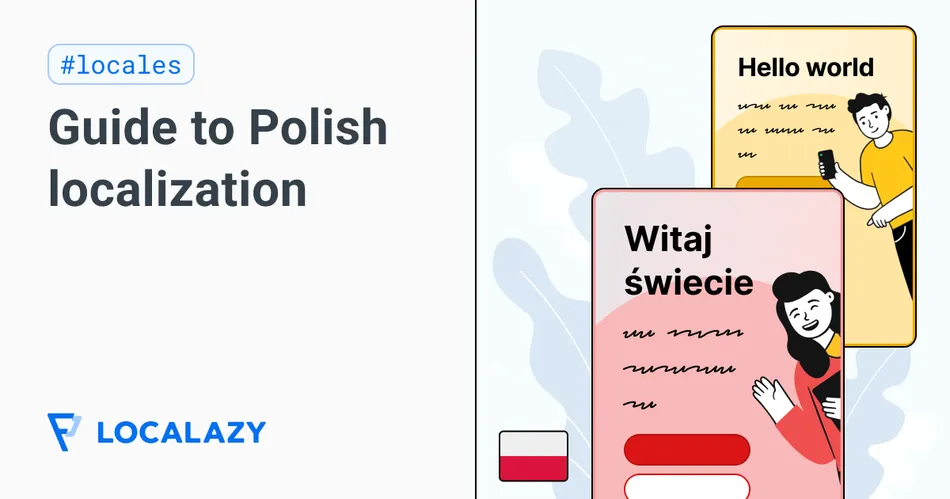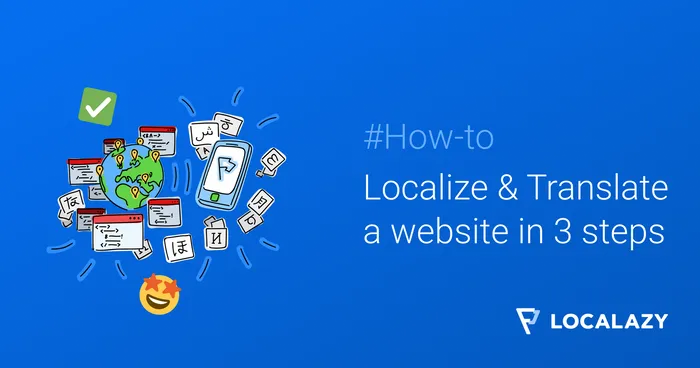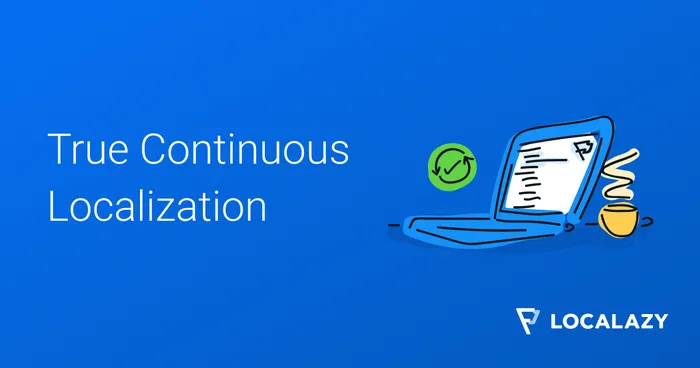Poland isn’t just another item on your expansion checklist. It’s one of Europe’s largest and fastest-growing digital markets. With 38 million consumers, near-universal internet access, and an extremely active e-commerce sector, it’s a region you can’t afford to ignore.
Yet too many brands make the same mistake: assuming English is enough. And if it’s not, a quick AI translation will somehow patch things up. That shortcut mindset has sunk many companies, leaving behind clunky websites, copy that doesn’t convert, disappointed customers, and missed revenue.
English alone won’t win you Poland. And raw machine translations won’t either. To succeed here, your communication has to level up: it needs to feel local. That means adapting your content to the culture, the language, and the expectations of real people. Not just visitors, but potential loyal buyer.
So, how do you earn that trust in Poland? You’ll find the answer in our Polish localization guide below.
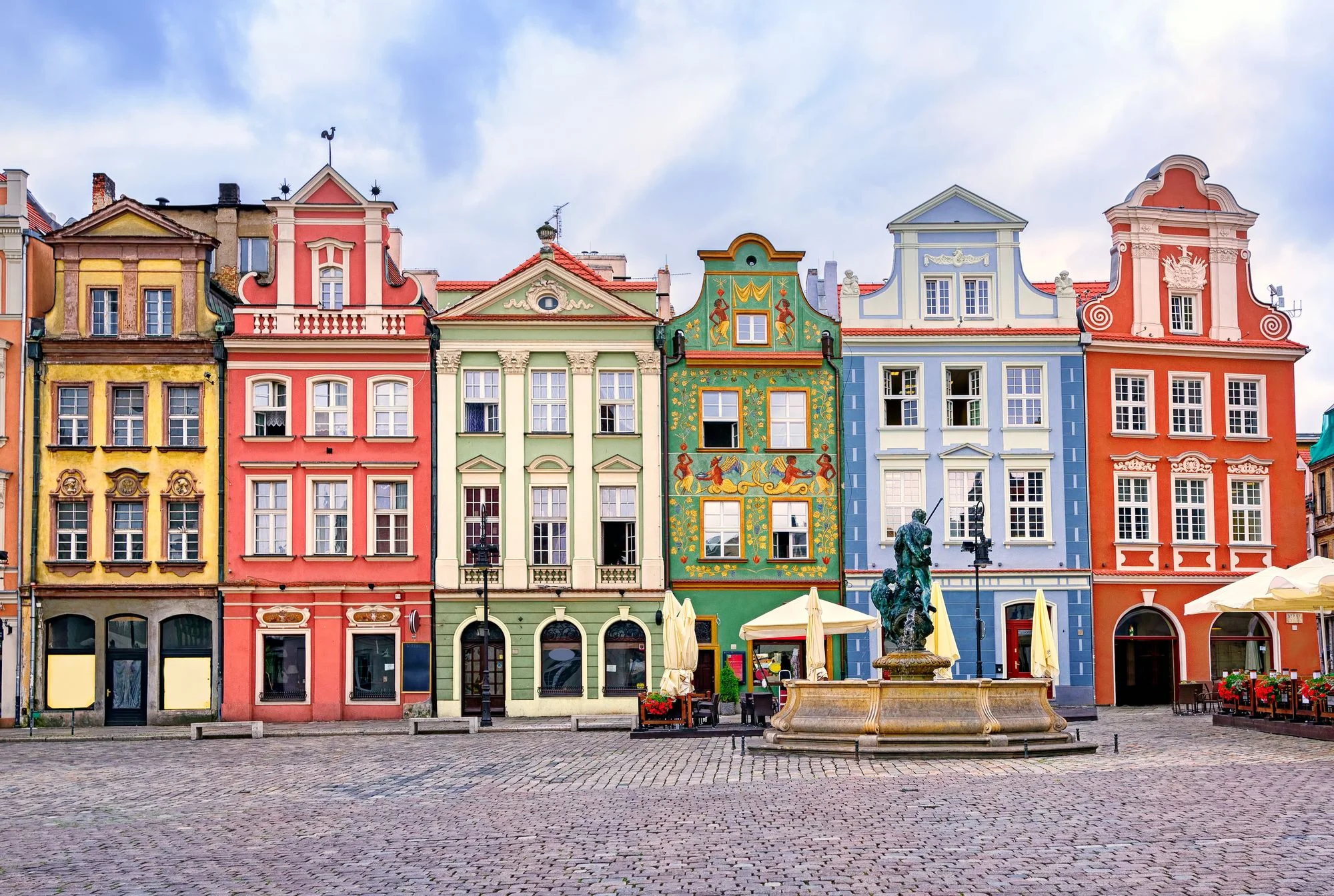
📈 An economy with a strategic edge 🔗
Poland’s economy is on the rise. It’s ranked the sixth-largest economy in the EU and the world’s 20th by nominal GDP (amounting to $980 billion). It’s no longer an emerging market but a global player you can’t ignore. The digital sphere looks promising, too. Poland is home to over 38 million people, with nearly 96% of households connected to the internet. Here, as many as 87% of the population are active online users.
E-commerce has become a national habit. The Buying Comfortably 2025 study showed that 93% of Polish internet users bought something online in the past six months, and for the third year in a row, all respondents confirmed they have shopped online at least once. 🛒 Mobile commerce has been leading this shift, since 65% of Poles now shop on smartphones, and more online purchases are made on phones (39%) than laptops (31%).
A perfect setting for your localized website, e-commerce store, or mobile app. But numbers alone won’t secure success. Before you jump into ordering Polish translation services, you’ll need to understand how Polish consumers browse, use apps, and make purchase decisions.
🤔 Polish user behavior: Skeptics by nature 🔗
Reason and dignity. These two words capture much of Poland’s consumer spirit. Decades of economic ups and downs have shaped a culture of smart, value-conscious shopping. When it comes to bigger purchases, many Poles still look for discounts, compare deals, and need clear reasons to trust a new brand.
That doesn’t mean resistance to novelty, especially among younger generations, who are open to global trends and premium products, but even they expect purchases to be justified by quality, transparency, and trustworthiness. In short, Polish buyers are pragmatic, but far from passive. Gain their trust, and they’ll reward you with loyalty. Personal relationships matter, so do local values.
Poles expect their shopping to be justified by quality, transparency, and trustworthiness. When it comes to bigger purchases, many still look for discounts and compare deals
If you want to win a Polish consumer’s heart, tap into local culture, habits, and traditions. But do it with nuance. Around 88% of Poles describe themselves as patriotic, which means national symbols, history, and cultural pride resonate strongly. However, consumers can be quick to spot (and reject) shallow or opportunistic gestures. For example, campaigns tied to football, Poland’s most-followed sport, can boost emotional connection if executed respectfully. ⚽️
Even if your brand thrives on disruption, with bold campaigns and unconventional ads, you can’t skip the basics. Solid foundations matter: invest in thorough market research, track current trends, and adapt quickly when opportunities arise. Polish consumers appreciate creativity, but they value relevance and credibility even more.
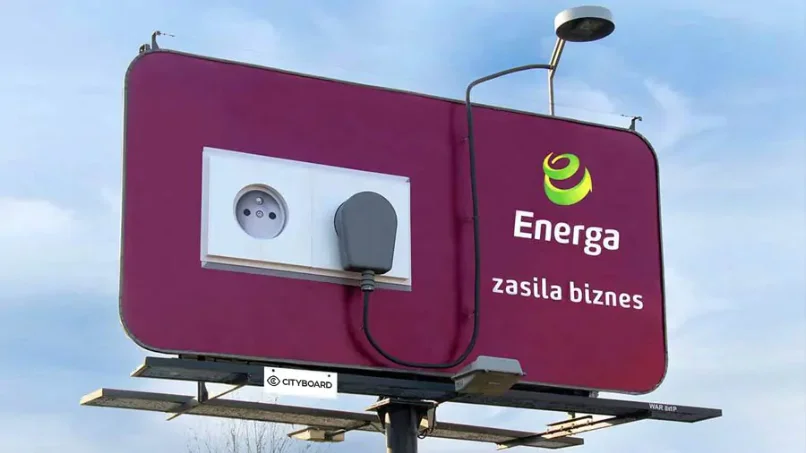
🎯 Sectors with the highest potential 🔗
Before you tap into the dynamic Polish market with your authentic and culturally-aware content, it’s wise to discover where the potential is. Some industries draw especially active and loyal consumers. Focusing on them can give your brand an early edge.
Here’s a short overview:
- 💄 Beauty & Health: Poland ranks 5th in the EU in terms of the value of the cosmetics market. This industry is expected to reach €6.4 billion by 2028.
- 📱 Electronics: Smartphones, tablets, laptops, PCs, TVs, smartwatches, and game consoles are among the top-selling products. The industry’s value exceeded PLN 44B (~ €10.2 billion) in 2024.
- 🥗 Food: Poles spend a considerable amount on nutrition, including organic products. According to Statista, in 2025 the Polish food market is valued at US $77.2 billion (≈ €71 billion).
- 👗 Clothes: A top-selling online category. Poles love to spend on clothing and accessories, both at local and foreign e-commerce stores. In 2025, the apparel market in Poland is valued at €14.98 billion.
- 🏡 Household and gardening: Polish consumers enjoy upgrading their homes and purchasing durable goods. In 2024, the Lawn & Garden market alone was worth ≈ €3.17 billion, and hardware & home improvement stores in Poland came close to about €4.6 billion in revenue in 2025.
But even if your product does not fit into any of the above categories, your chances of conquering the Polish market are still high as long as you remember about local values and shopping habits.

🚀 Steps for boosting conversion in the Polish market 🔗
Engaging product descriptions are not enough. To attract to your e-store a decent share of the 78% of Poles who regularly shop online, you’ll need to build trust. Here are some ideas.
The more data, the better 🔗
Don’t rely on flashy and superficial content for effective sales. Credible data matters more. Spontaneous shopping is not common, with over two-thirds of Poles comparing prices, reading reviews, and chasing promotions before making a purchase decision. Many abandon their carts too, especially if they can’t find their preferred payment methods or delivery time turns out to be too long.
Consider displaying details such as:
- 🌟 Benefits
- 💸 Discounts
- 🎁 Promotions
- 🗣️ Testimonials
- ⚡ Quick delivery
- 🔄 Transparent return policy
- 📋 Credible feature descriptions
- 💳 Local payment methods (BLIK, PayU)
Polish your payment experience 🔗
Don’t assume everyone pays with credit cards and PayPal. Most Poles prefer their local payment methods, such as BLIK or PayU. If your store doesn’t offer these options, which are quick, secure and convenient, you risk alienating a large portion of Polish consumers who rely heavily on them.
Currency is another tricky area. In Poland, people expect to see prices in Polish złoty (PLN), not euros, not dollars. Forcing users to convert in their heads (or worse, in another app) is a fast track to cart abandonment. Always display prices clearly in PLN, with consistent decimal formatting and no rounding “shortcuts.”
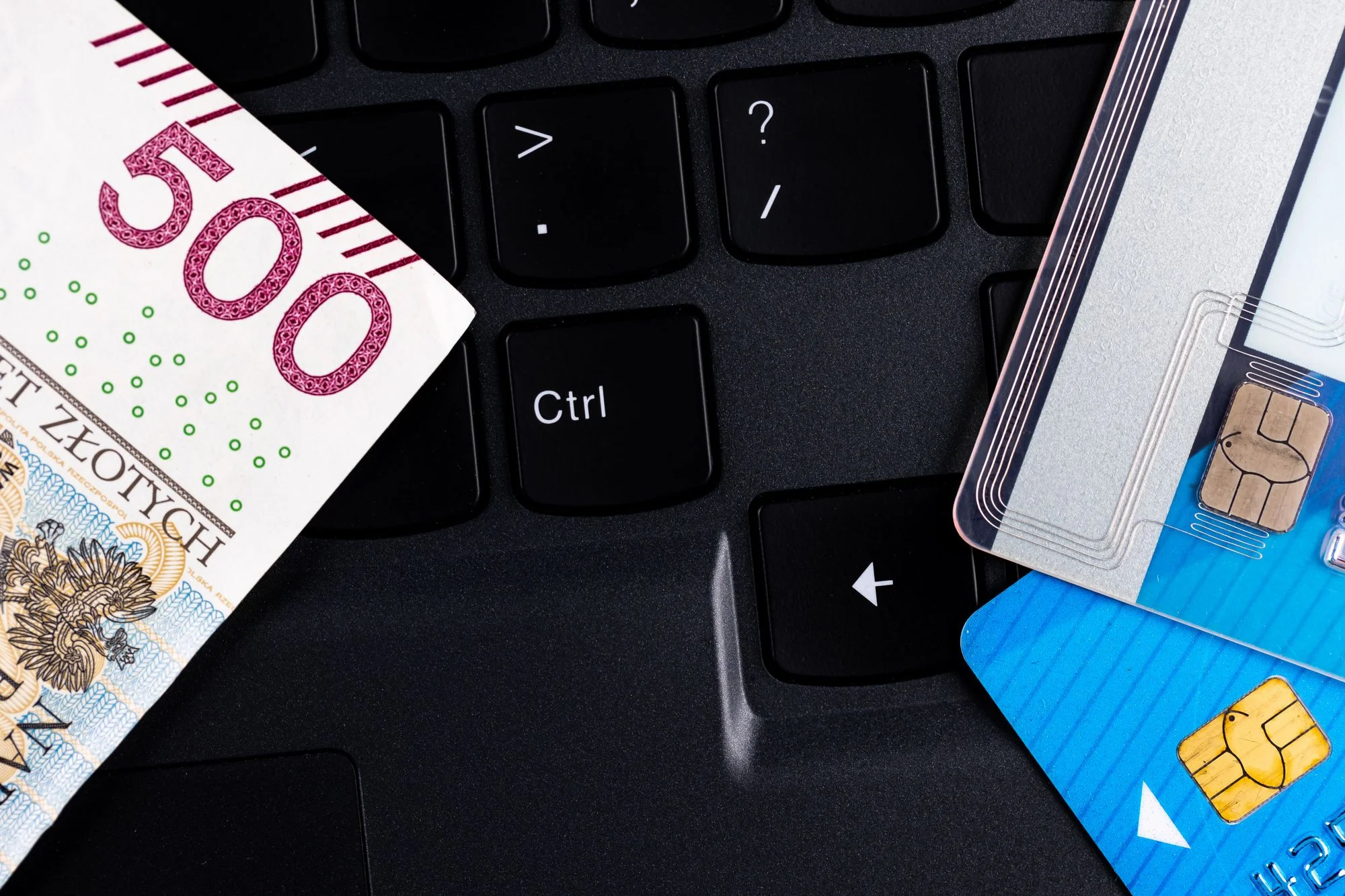
Transparency doesn’t stop at pricing. Poles value clarity, so put ratings, reviews, payment options, and delivery terms front and center. Surprises at checkout, such as hidden costs, missing payment methods, or vague delivery details, are the quickest route to breaking trust.
Pay attention to your mobile UX 🔗
Smartphones now account for over 42% of web traffic in Poland, with many consumers using apps or mobile websites for their online purchases. To tap into this audience, ensure your website is mobile-friendly, and, in case of in-app purchases, prioritize Android. Smartphones with this system dominate the market with a 76% share. Messaging platforms (such as Messenger or WhatsApp) are also routinely used to communicate with retailers and track orders. Adding this form of communication to your strategy is a smart move. Of course, as long as this communication happens in Polish.
Be present on social media 🔗
Polish website and app localization is only the first step. Local consumers also expect to find your brand on the channels they use every day. Content in Polish on Instagram, Facebook, and the fast-rising TikTok strengthens brand visibility and credibility. Global, English-only accounts might raise awareness, but they won’t spark engagement. Partnering with local content creators and influencers can amplify your reach and give your brand the authentic voice Polish audiences respond to. ⚡️
One good example of this approach is Lidl Poland, which localized its TikTok content with humorous videos featuring famous Polish content creators. The brand won the TikTok Ad Awards 2024 for Central Europe and keeps increasing its engagement and sales, especially among young users.
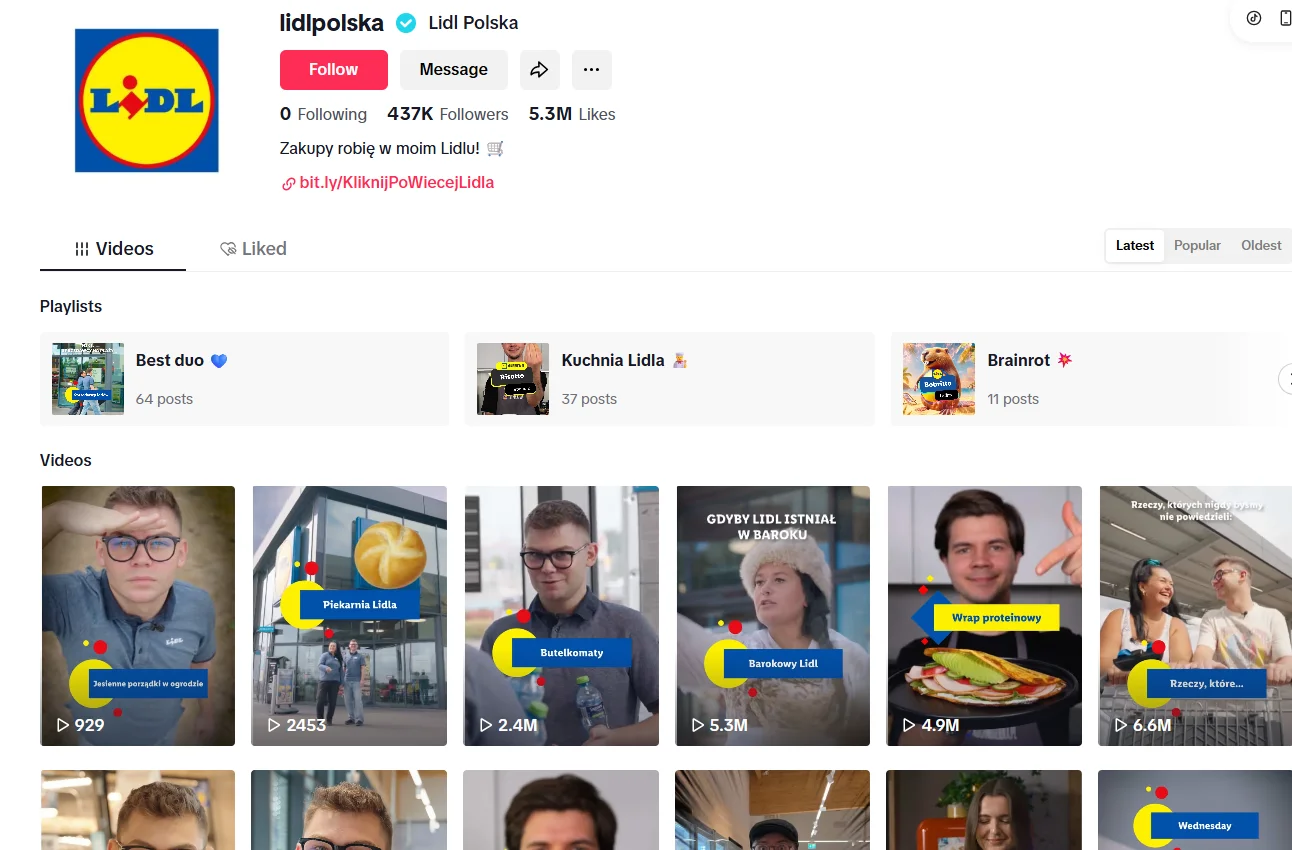
Communicate in the local language 🔗
A slick mobile experience won’t get you far if half the interface is still in English. Buttons, error messages, and checkout flows must be fully localized, including legal terms, return and privacy policies, product descriptions, and customer reviews. Don’t forget local customer support: nothing breaks the deal faster than realizing that your “local” site connects you to an English-only agent when you need help with an order.
📕 Related read: The UX writing process explained in 7 steps
🗣️ The intricacies of the Polish language 🔗
If you’re ready for localization for Poland, you'll also have to dive into the complexities of the local language. This will help you plan better for Polish software internationalization or Polish website translation.
Polish belongs to the West Slavic branch and is rooted in Proto-Slavic. It evolved through several historical stages from Old Polish in the 10th century to Modern Polish, emerging after World War II. It has gained a reputation as one of the world’s most difficult languages, mainly thanks to its rich inflection and seven distinct grammar cases. As if that wasn’t enough, it also offers an interesting adventure through three genders in singular forms, two genders in plural forms, gendered nouns, and gendered adjectives. These intricacies are one of the reasons why Polish text expands by about 20% when you translate it from English.
While the default structure is Subject-Verb-Object, Polish’s inflection allows for flexible word order. Changing the order can subtly shift the emphasis or highlight specific elements in a sentence.
Polish text expands by about 20% when you translate it from English, due in part to its rich inflections, grammar cases, and gendered words. You'll have to adapt your UX accordingly for this challenge
When you address your consumers, you have two forms to choose from: formal ("Pan/Pani") and informal ("ty"). Most websites, mobile apps, and software adopt the latter approach, displaying content with the informal “you”. The formal tone is essential in customer-facing or professional contexts, while the informal can be used in casual settings or when the brand aims to feel closer or more relatable.
Though Standard Polish prevails today, there are several regions with specific dialects, such as Silesian (southwest) or Goral (mountainous southern areas). Creating ads or social media content spiced up with local dialects might be a good strategy to attract consumers from these regions. However, dialects are a delicate matter, so make sure you work with experts to avoid pitfalls.

Speaking of pitfalls: watch out for missteps such as mixing "i" with "oraz" (both mean “and”) inappropriately, using incorrect case endings, or mismatching tone that can fall flat or confuse users.
Equally important is inclusive language. Avoid addressing users exclusively in the masculine form. It risks alienating female consumers and undermining trust. Aim for gender-neutral phrasing whenever possible. If your brand speaks to a single gender, for example, women’s fashion or men’s grooming, then consistently using one gender form is acceptable.
⚠️ 5 mistakes in Polish localization that make users hit "back" 🔗
The list of possible mistakes in Polish localization could go on forever, but these are the biggest blunders you’ll want to steer clear of.
1. Skipping proper localization testing 🔗
Localization doesn’t stop once the text is translated. It has to be tested in the product itself. Skipping this step often leads to errors, broken layouts, and frustrated users. Polish words are usually longer than English ones, which means buttons, menus, and mobile screens can easily overflow or get cut off.
Sometimes the fix is design tweaks; other times, it’s asking linguists for shorter, equally natural alternatives. Additionally, watch for unclear CTAs, broken links, or untranslated strings, all of which can frustrate your clients and force them to leave your website. To be on the safe side, test your final product by collaborating with experts who will help you ensure your app or website not only works, but also feels right to Polish users.
2. Overlooking Polish pluralization rules 🔗
Plural forms are another common stumbling block. In Polish, “two notifications” and “five notifications” require different translations, and skipping those distinctions leads to awkward, incorrect strings that users immediately notice. Yet many brands still release products packed with these errors.
To avoid this error, build pluralization into your workflow. Languages like Polish have complex plural rules, and modern localization platforms, including Localazy, offer built-in support to handle them automatically. That way, you don’t have to wrestle with custom rules, and your users see copy that feels natural.
3. Applying English formatting to Polish 🔗
Using English formatting conventions in Polish content is a subtle but significant error. All it takes is one incorrectly typed punctuation mark to confuse your users. To stay clear of troubles, always use a space as the thousands separator (“1 500 zł”) and a comma for decimals (e.g., “1,5 zł”). Dates follow the day–month–year format, such as “15.08.2025” or, in full text, “15 sierpnia 2025.”
All it takes is one incorrectly typed punctuation mark or a badly-applied plural form to confuse and alienate your users. Testing your UX for these type of mistakes will ensure your product feels right for them
4. Over-relying on raw AI translations without review 🔗
AI translation is quick and good. Until it isn’t. Relying on raw AI output is the fast track to disappointment: copy that doesn’t convert, texts filled with gender bias, English sentence structure, or unnatural wording. There’s nothing wrong with using AI for the first draft if speed is your priority. Just make sure it’s reviewed by professional linguists who will verify if your copy is engaging and free of errors.
5. Ignoring Polish tone nuances and cultural context 🔗
Adapt to attract. Polish consumers quickly spot the difference between content that’s simply translated and copy that’s been carefully adapted to their culture. The latter feels natural, uses the right idioms, matches the expected tone, and sometimes weaves in a touch of humor or local references. That’s what smart brands do: adapt to truly connect.
Polish UI and marketing copy should reflect local tone, striking a balance between warmth and professionalism. Be cautious, though: misplaced humor or irony can miss the mark, and stereotypes will do more harm than good.
All these may seem like a lot to juggle, but fear not. Localizing into Polish is not a mission impossible. Here are some examples of brands that nailed it.
📊 Learning from the best (and worst) Polish localization examples 🔗
The list of successfully localized content for the Polish market is long, so for the sake of time, let’s pick a few cherries on top.
🎵 Spotify: localization boosted with personalization 🔗
Spotify has skillfully combined localization with personalization by offering not only a Polish UI but also tapping into regional preferences. Local relevance is the guiding principle, visible in everything: from onboarding flows to curated song recommendations.

In Poland, like in many other markets, Spotify invested early in understanding local artists, genres, and listening habits, working with experts who could spot emerging trends. They also adapt images, tone of voice, and visual elements to feel locally authentic. As a result, it's become one of the top music apps in the country, making it a daily companion for Polish music lovers.
🏡 IKEA: local holidays, local stories 🔗
IKEA doesn’t stop at translating product names or website copy. It adapts entire campaigns to the Polish calendar. Seasonal promotions highlight not just global celebrations like Christmas or Valentine’s Day, but also local occasions such as Back to School or Mother’s Day (celebrated on a different date in Poland than in many other countries). A standout example was a recent campaign for this ocassion which blended humor with everyday practicality.
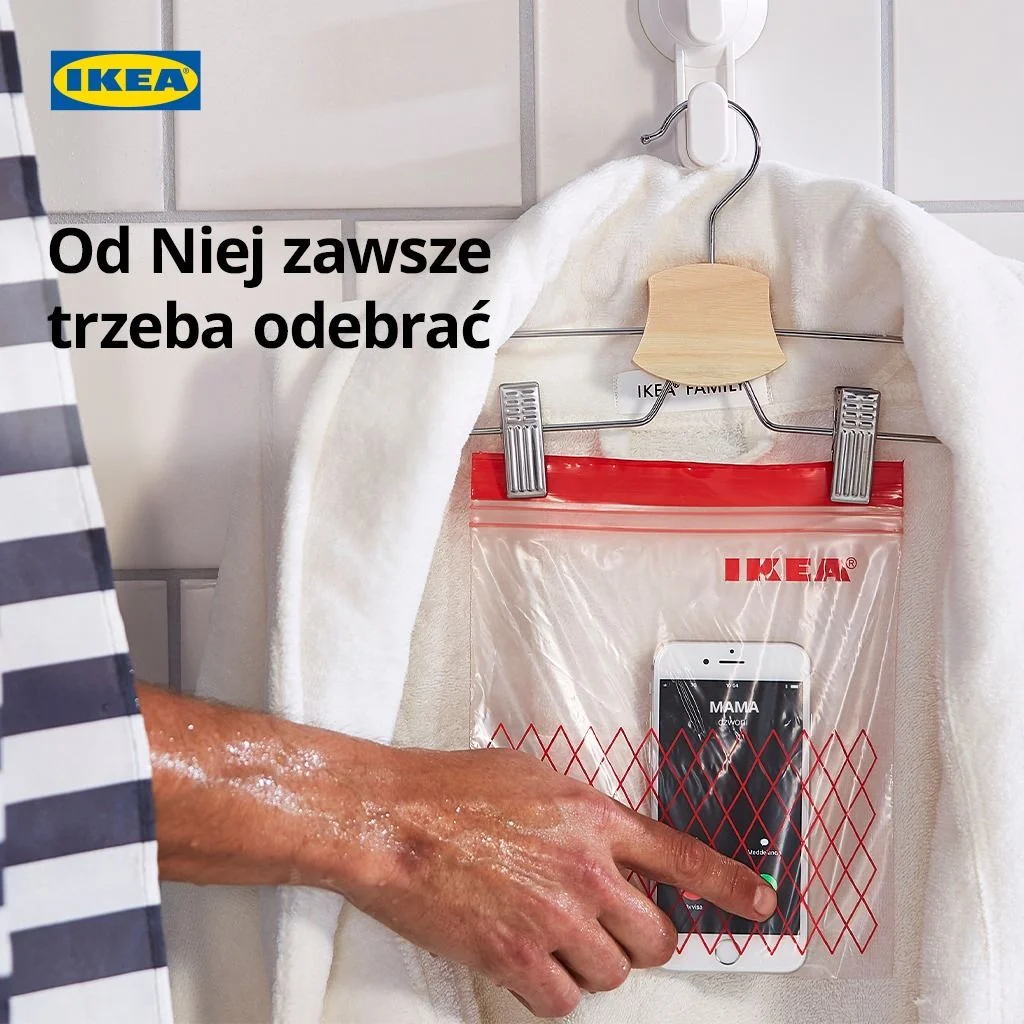
🎮 Secrets of Alexandria: a cautionary tale 🔗
Not every localization story has a happy ending. In 2014, the casual game Secrets of Alexandria tried to capture Polish players but flopped spectacularly. Ranked among the least popular titles in its category, the app was loaded with localization missteps: cut-off strings, typos, missing translations, and clunky phrasing. Instead of drawing players in, these errors broke immersion and damaged trust, proving how costly poor localization can be.
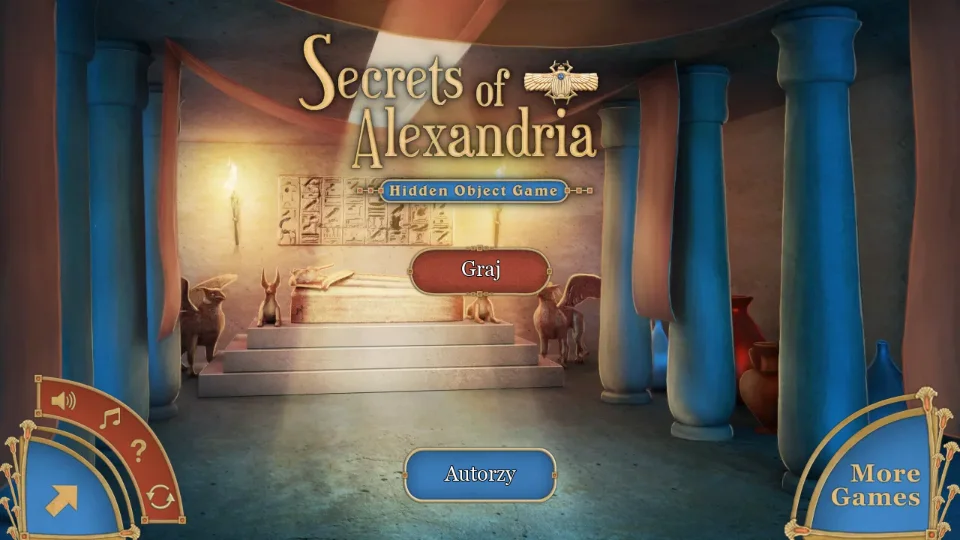
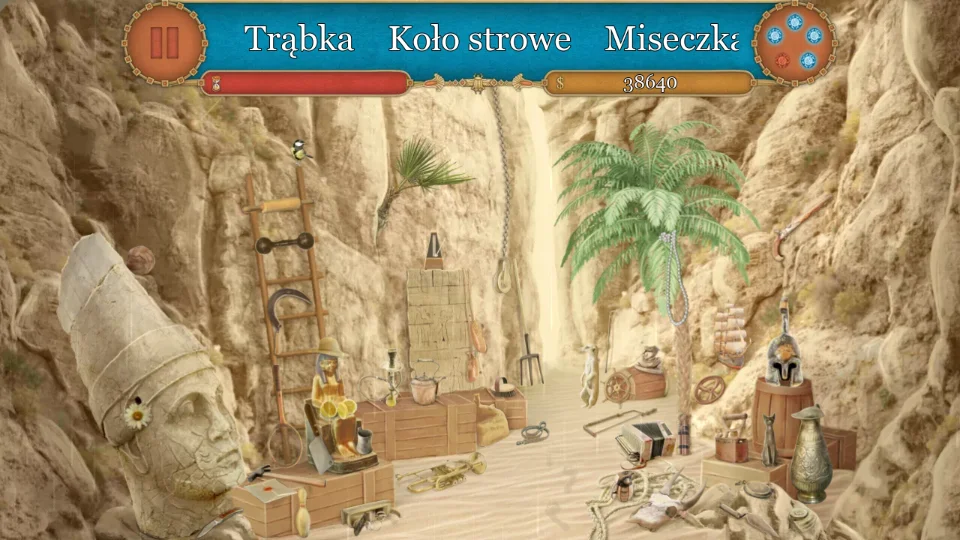
⚒️ Localazy handles Polish localization challenges for you 🔗
For your Polish localization strategy to be successful, you need to collaborate with experts and use the right tools. Localazy makes it easy for you to build a sustainable localization workflow that includes pluralization handling or smart placeholders, which are common in languages with intricate plural logic. Other useful features include our built-in glossary, translation memory, and Automations to orchestrate updates and automate tasks like hiding or showing deprecated keys during migrations or rebranding.
After your developers configure the integration, they'll be able to step back and let marketers and translators do their job. You'll be able to onboard your team and community contributors to translate, and use machine and AI translation options to work on your first draft. Or even easier — you can just order professional translations from our vetted Polish language experts and focus on other tasks while the job is completed. One tool is enough to kickoff your new market entry.
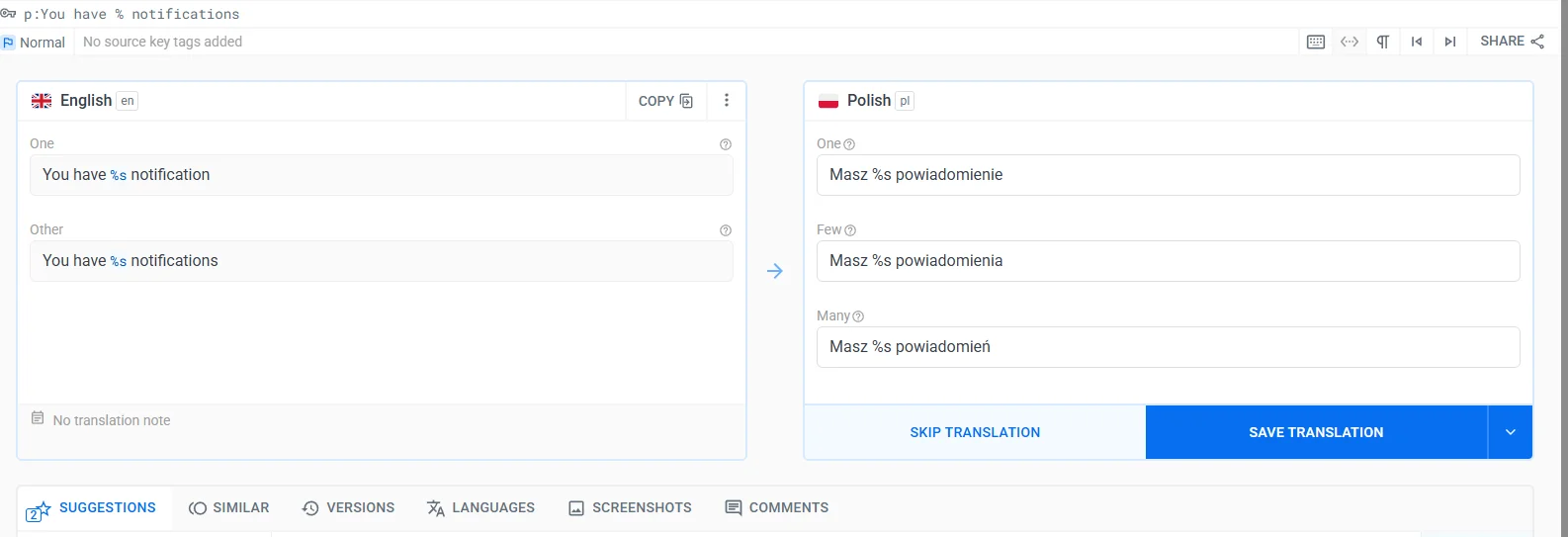
🇵🇱 Your Polish market entry starts here 🔗
Expanding into Poland isn’t just about adding a new language. It’s about building trust from the very first interaction. With 38 million digitally savvy consumers, a fast-growing e-commerce sector, and a deep cultural pride, Poland offers enormous potential for brands ready to invest in proper localization.
Here’s what matters most:
- Invest in high-quality localization from day one to avoid blunders or reputation risk.
- Test your UI with real Polish users or local experts to ensure a smooth experience.
- Mind the details, like proper formatting, local payment methods, currency in PLN, or correct plural forms.
- Check the tone: Align your voice with Polish expectations. Make sure your message is authentic and culturally aware.
Brands that approach Polish localization with a clear strategy and respect build lasting relationships. And in an engaged market, these relationships can easily convert into loyalty and growth.
Are you ready to take your content to the Polish market? Great. Let's talk.
